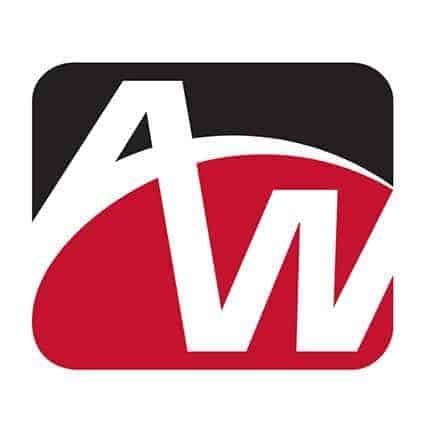Millions of Americans suffer from opioid use disorders involving prescription pain medications. According to the latest Centers for Disease Control data, more than six in ten overdose deaths involve an opioid and deaths from prescription opioids including oxycodone, hydrocodone and methadone have more than quadrupled since 1999. As such, drug overdose is now the leading cause of accidental death in the United States, with more than ninety-one people dying every day from an opioid overdose.
Needless to say the impact of the opioid epidemic on the health care delivery system has been significant and no hospital or health care organization is immune from the effects of this crisis. To address this growing problem, both state and federal governments have put regulatory mechanisms in place to educate prescribers and attempt to thwart potential drug diversion.
Drug Diversion
Prescription drug diversion involves rerouting a prescription drug for a use other than its intended purpose. Two ways that drug diversion can occur is through “doctor shopping” and also by diversion within health care settings by employees.
Doctor shopping occurs when a patient obtains controlled substances from multiple health care providers without the prescribers’ knowledge of the other prescriptions. Some signs of doctor shopping include the patient wanting an appointment toward the end of office hours, frequently visiting an emergency department (ED), giving prescribers specific symptoms but a vague medical history, citing allergies to non-opioid medications, stating that the prescription has been lost or requests refills more often or earlier than prescribed. EDs in particular are frequent places where “doctor shopping” occurs.
Drug diversion by health care facility staff can also occur due to the availability and access to drugs. No one wants to believe one of their employees is diverting drugs meant for a patient, but odds are that someone in your organization is diverting drugs intended for patients. Thus, health care organizations must have strong controlled substance security measures and active monitoring systems to prevent and detect diversion activities. When faced with instances of drug diversion by its providers, actions by health care facilities may include:
- Conducting an assessment of harm to patients
- Consulting with public health officials when tampering with injectable medication is suspected
- Consulting with counsel to determine any reporting obligations and promptly reporting the suspected diversion to the appropriate law and other enforcement agencies and licensing boards when applicable
When a patient is suspected of diverting drugs, the appropriate response is guided by state law. While there may not be an obligation for health care providers to report patient involvement in drug diversion crimes, the practitioner may report such crimes to law enforcement. Please note that providers must remain compliant with HIPAA regulations. HIPAA provides an exception for reporting crimes against a provider, but limits the disclosure to only that information needed to report the necessary facts. So, in order to protect the organization against allegations of a HIPAA violation when reporting patient involvement in drug diversion crimes, develop guidelines to assist health care providers and other relevant persons to report drug diversion crimes in a manner that preserves confidential patient information.
Prescription Drug Monitoring Programs
In an effort to curb drug diversion, forty-nine (49) states and the District of Columbia have passed regulations to establish Prescription Drug Monitoring Programs (PDMPs). PDMP’s are state-run electronic databases used to track the prescribing and dispensing of controlled prescriptions to patients. They are designed to monitor information for suspected abuse or diversion and provide the prescriber and pharmacist information regarding a patient’s controlled substance prescription history. Remain mindful that each state’s PDMP operates differently, so it is important to understand your state’s PDMP regulations.
Naloxone
Another tool being used to combat the opioid death epidemic is the use of Naloxone. Naloxone can be an effective tool to prevent fatal overdoses for at-risk patients. Many states recently passed legislation to provide legal protection to physicians, bystanders or family members who administer Naloxone when encountering an overdose situation. In an effort to prevent opioid overdoses, hospitals are also now providing Naloxone to at-risk patients on discharge. The Substance Abuse and Mental Health Services Administration (SAMHSA) has developed an easy-to-use toolkit to be distributed with Naloxone. In addition, the American Society of Anesthesiologists has developed an information card explaining how to recognize and respond to an opioid overdose to help family and friends attend to someone suspected of an opioid overdose.
Flagging Patient Medical Records
A frequently asked question is whether to flag or label a patient’s medical record with “known drug seeker” or “frequent flyer.” It is important that prescribers and employees recognize the risk associated with labeling patients. There is potential that a serious medical condition may go undiagnosed if or when a patient’s complaint is ignored because of prejudgment that “this presentation” is just another attempt to obtain a controlled substance. Keep in mind that every patient presenting for care must receive a proper medical screening examination and necessary stabilizing treatment. The practitioner must independently evaluate each patient episode to determine the appropriate treatment regime.
Risk Management Considerations
Health care professionals share responsibility for minimizing prescription drug abuse and drug diversion, and promoting safe prescribing practices. The following risk mitigation strategies are offered to assist health care providers in maintaining the controls necessary for safe prescribing practices.
Develop a process to screen patients for substance misuse, abuse, diversion, addiction or overdose.
- Participate in the state drug monitoring program to identify potential misuse and/or drug diversion.
- Establish a zero tolerance policy for medication theft in your organization.
- Use a secure waste retrieval system in all patient care areas where controlled substances are administered.
- Obtain written informed consent and agreement for opioid treatment.
- Review alternatives to opioids and document options discussed with the patient.
- Prescribe the lowest effective dose and quantity needed for the expected treatment duration.
- If controlled substances are ordered for pain, have the patient sign a pain management agreement which describes the provider’s policy for prescribing controlled substances, patient education and reasons for discontinuing opioid therapy.
- Develop a policy that addresses the use of pain medication including timing and frequency of refills.
- Refrain from providing prescriptions for lost, destroyed or stolen controlled substances.
- Provide patients with information on how to safely use, store and dispose of prescription medication.
- Safeguard prescription pads or log-in credentials if e-prescribing is used.
- Observe all federal and state prescribing and reporting regulations.



 PhysWeekly
PhysWeekly